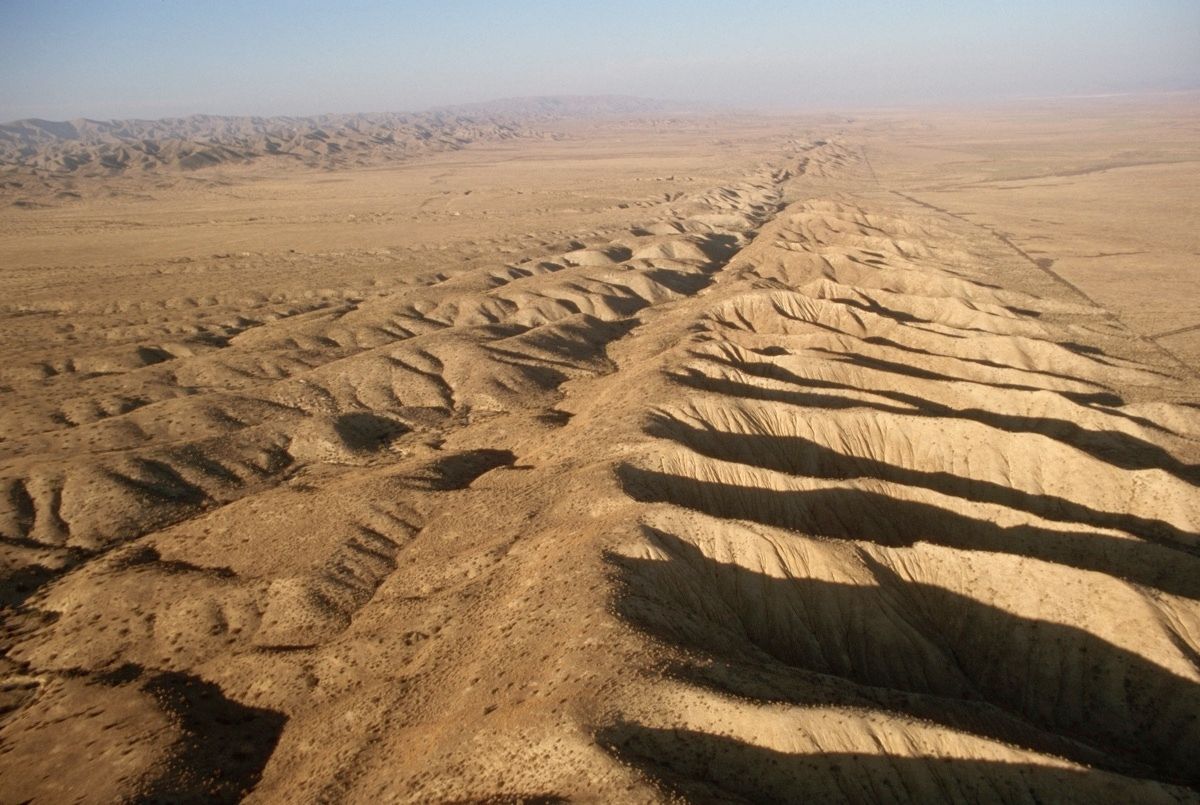Unveiling Ruptures Of The San Andreas Fault

Have you ever wondered about the San Andreas Fault? This massive crack in the Earth's crust stretches over 800 miles through California. It's famous for causing earthquakes, some of which have been quite powerful. But there's more to this geological wonder than just shaking ground. The fault is a fascinating place to visit, offering a glimpse into the forces that shape our planet. You can find parts of it in places like the Carrizo Plain, where the land seems to have been torn apart. It's a great spot for hiking and photography. Whether you're a science enthusiast or just love nature, exploring this fault line offers a unique experience. Just remember to stay safe and respect the natural environment while you're there.
Understanding the San Andreas Fault
The San Andreas Fault is a famous geological feature that stretches about 800 miles through California. It's a place where two massive tectonic plates meet, making it a hotspot for earthquakes. Exploring this fault offers a unique glimpse into the Earth's dynamic nature. Here are some fascinating spots along the fault worth visiting.
1. Carrizo Plain National Monument
Carrizo Plain is a hidden gem in California. This vast, open grassland is one of the best places to see the San Andreas Fault. The fault line is visible as a long, straight valley cutting through the landscape. In spring, wildflowers blanket the plain, adding a splash of color to the rugged terrain.
2. Parkfield
Known as the "Earthquake Capital of the World," Parkfield is a small town that sits right on the fault. It's a quirky place with a population of just a few dozen people. Visitors can walk across the Parkfield Bridge, which spans the fault line, and feel the thrill of standing between two tectonic plates.
3. Pinnacles National Park
Pinnacles National Park offers stunning rock formations and diverse wildlife. The park's unique landscape was shaped by volcanic activity and the movement of the San Andreas Fault. Hiking trails lead visitors through towering spires and talus caves, providing breathtaking views and a chance to experience the fault's power.
4. San Andreas Fault Observatory at Depth (SAFOD)
SAFOD is a scientific research site near Parkfield. While the observatory itself isn't open to the public, the area around it offers educational displays and information about the fault. It's a great spot for geology enthusiasts to learn more about the fault's behavior and its impact on the region.
5. Point Reyes National Seashore
Point Reyes is a stunning coastal area with dramatic cliffs and sandy beaches. The San Andreas Fault runs right through the park, and visitors can see evidence of past earthquakes in the landscape. The Earthquake Trail is a short, easy hike that highlights the fault's impact on the area.
6. Anza-Borrego Desert State Park
Anza-Borrego is California's largest state park, offering a diverse desert landscape. The park's rugged terrain includes canyons, badlands, and palm oases. The San Andreas Fault runs through the park, and visitors can explore the fault zone on guided tours or self-guided hikes.
7. Coachella Valley
The Coachella Valley is famous for its music festival, but it's also a great place to see the San Andreas Fault. The fault runs along the valley's eastern edge, creating a dramatic landscape of mountains and desert. Visitors can take guided jeep tours to explore the fault and learn about its geological significance.
8. Joshua Tree National Park
Joshua Tree is known for its unique desert landscape and iconic Joshua trees. The park straddles two deserts, the Mojave and the Colorado, and the San Andreas Fault runs nearby. Hiking trails offer stunning views of the fault and the surrounding desert, making it a must-visit for nature lovers.
9. Salton Sea
The Salton Sea is a large, shallow lake in the desert of Southern California. It's a fascinating place with a unique ecosystem and a rich history. The San Andreas Fault runs along the eastern edge of the sea, and visitors can explore the fault zone and learn about its impact on the region's geology and ecology.
Understanding the San Andreas Fault
The San Andreas Fault is more than just a geological feature; it's a significant part of California's history and future. This fault line stretches over 800 miles, marking the boundary between the Pacific and North American tectonic plates. Its potential for causing powerful earthquakes makes it a subject of fascination and concern. Visiting the fault offers a unique opportunity to witness the forces shaping our planet. From the Carrizo Plain to the Salton Sea, each segment of the fault tells a story of Earth's dynamic nature. While exploring, it's crucial to respect the environment and stay informed about safety guidelines. Whether you're a geology enthusiast or just curious, the San Andreas Fault provides a compelling glimpse into the Earth's inner workings. Understanding this natural wonder helps us appreciate the delicate balance of our world and the importance of preparedness.

